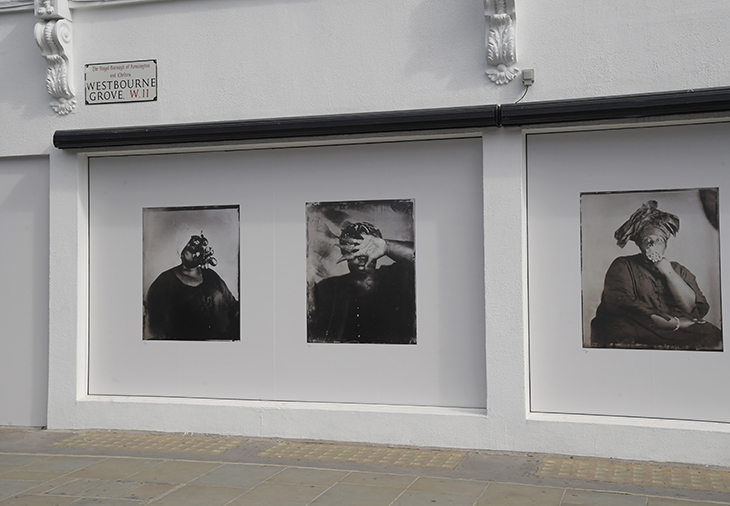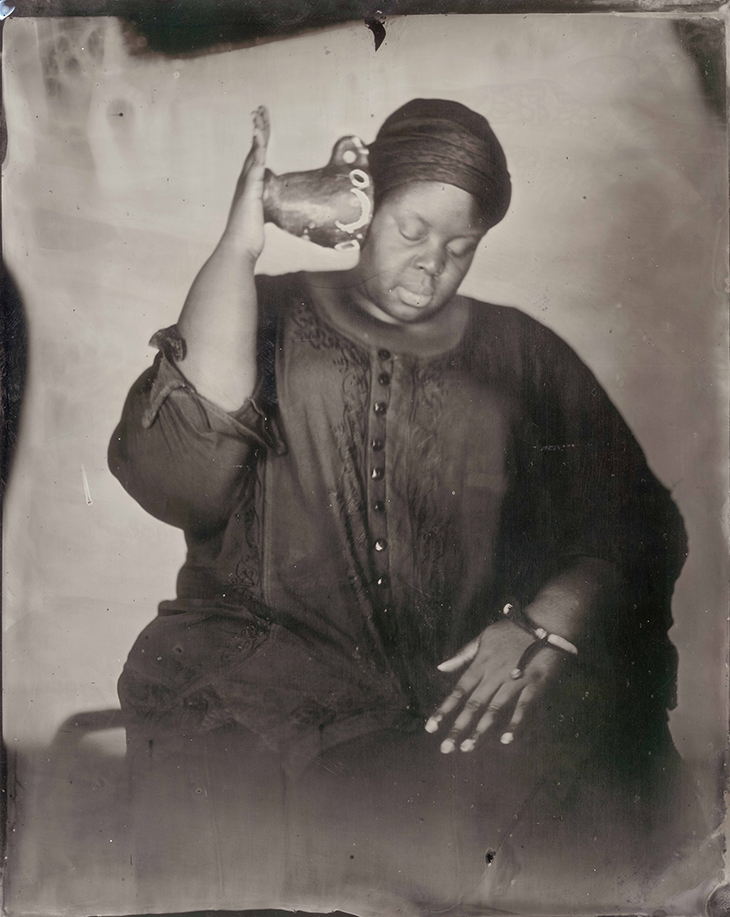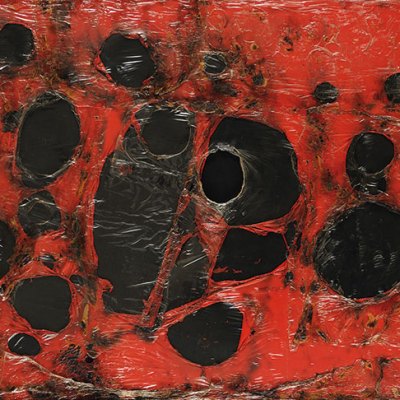In spring 2017 – shortly before Londoner Khadija Saye embarked for Venice to see her work installed at the Biennale, and a month or so before her death in the fire at Grenfell Tower that June – the 24-year-old photographer spoke in an interview with the BBC of having recently become more ‘aware of the power that the camera holds’. She was talking in particular about the area around Grenfell, North Kensington, where she grew up, and where the pace of urban development means that the face of the city is never fixed. ‘I can look back at old photographs and see how much the space has changed, even in like 10 years.’
Sothiou (2017), Khadija Saye. Image courtesy the Estate of Khadija Saye

In the aftermath of the blaze that would transform the area irrevocably in a matter of hours, part of the power of the young artist’s work arises from this prescient sense of the camera’s ability to bear witness, preserving what might otherwise prove ephemeral. Her final series of photographs, six of which were exhibited at Venice, is a group of nine self-portraits titled Dwelling: in this space we breathe (2017). As part of a public art project named Breath is Invisible, instigated by the arts patron Eiesha Bharti Pasricha and curated by Sigrid Kirk, these photographs have now been printed as four-foot-tall silkscreens, and installed along the outside of 236 Westbourne Grove in Notting Hill, not far from the tower.
Installation view, ‘Breath is Invisible’ at 236 Westbourne Grove, west London, 2020

They appear as an eloquent reminder to passers-by of a life cut short, and of the 71 other lives lost at Grenfell (including that of Saye’s mother, who had been due to travel to Venice to see her daughter’s work later that summer). But the works are also a record of a history that stretches back much further. Through the laborious wet-plate process of applying collodion to tintype – not much used since the later years of the 19th century – Saye creates flickering, fugitive effects of light and shade, making the works seem like relics of a half-forgotten time. In each, she is holding a different traditional Gambian healing instrument, engaged in a series of sacred rituals, most often turned away from the viewer. Together, the photographs look back beyond Saye’s own upbringing in London, and past the lives of her parents in Gambia (her father was a Muslim, her mother a Christian), to more ancient forms of spirituality. Saye wrote that she was seeking to represent ‘the migration of traditional Gambian spiritual practices’ across time.
Tééré (2017), Khadija Saye. Image courtesy the Estate of Khadija Saye

The display will continue at Westbourne Grove until 7 August. But as with Saye’s photographs, this temporary event is driven by an urge for something more lasting. At the unveiling of the installation on 7 July, the Khadija Saye IntoArts Programme was also launched – an initiative founded by Nicola Green and IntoUniversity, which supported Saye in her teens – which seeks to encourage opportunities in the UK arts sector for young people from BAME backgrounds. Portfolios of prints are available for sale, with proceeds going to support the initiative. Later in the summer, the project continues with a series of new commissions by artists Martyn Ware, Zachary Eastwood-Bloom and Joy Gregory, created in partnership with local communities in west London.
Kurus (2017), Khadija Saye. Image courtesy the Estate of Khadija Saye

Saye described the slow and painstaking creation of the tintypes as a corrective to ‘the current disposable era where materials are rapidly produced and short-lived’; it’s hard not to think of the cheap cladding installed on Grenfell Tower that accelerated the blaze. Yet she also referred to Dwelling as a kind of ‘spiritual grounding after experiencing trauma’. It is to be hoped that these initiatives in her name secure lasting change, and enable future generations of young people to benefit from art’s power to heal.
Andichurai (2017), Khadija Saye. Image courtesy the Estate of Khadija Saye

‘In this space we breathe’ runs until 7 August as part of ‘Breath is Invisible’, which runs until 9 October at 236 Westbourne Grove, London.


